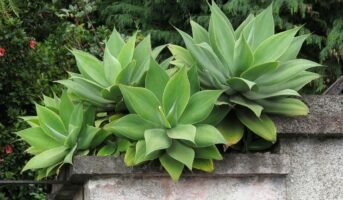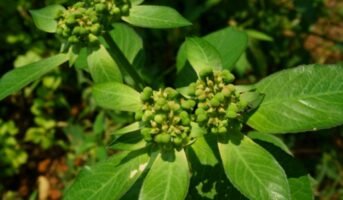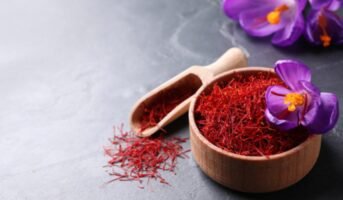Cicer arietinum, also known as chickpea, is a small herbaceous plant that belongs to the family Fabaceae. It is native to Europe, where it can be found in open fields, pastures, and roadsides. Cicer arietinum is a herbaceous plant commonly known as chickpea
It is believed that Cicer reticulatum, the wild predecessor of chickpeas, was domesticated around 7000 BC in southeast Turkey, where they continue to grow today. Around 6000 BC, domesticated chickpeas spread to the Mediterranean region, and around 3000 BC, to India.

Source: Pinterest
See also: All about India’s National Tree- Banyan
Cicer arietinum: Quick facts
| Botanical Name | Cicer arietinum |
|---|---|
| Common Name | Chickpea |
| Genus | Cicer |
| Kingdom | Plantae |
| Clade | Tracheophytes |
| Order | Fabales |
| Family | Fabaceae |
| Mature Size | Plant grows to 20–50 cm |
| Cultivation | Mediterranean Region |
| Benefits | Pulse Crop |
Cicer arietinum: Physical description
Cicer arietinum typically grows over a metre tall with slender stems and mounds of tiny white flowers. The leaves are long-petioles and have three or five lobes at the base. They are often mixed with bristly hairs on their upper surface. The flowers are arranged in dense umbels at the ends of branches. Each umbel contains between two and eight flowers on its pedicels. The fruits are dry berries that turn purple when ripe.
Cicer arietinum: How to grow
Cicer arietinum is a hardy perennial plant that grows to a height of 1.2-1.8 metres. It has bluish-green leaves with a bluish-green stem and heart-shaped flowers.
- Cicer arietinum plant needs full sun, well-drained soil, and a little bit of water during the summer months.
- It can be planted in a garden or indoors as an ornamental plant.
- The seeds should be sown in a prepared seedbed in spring, about 4 weeks before the last frost date.
- Sow each seed about 0.5 cm deep, cover them with fine soil, and keep them moist until germination occurs.
- Thin out the seedlings when they reach about 20 cm tall and transplant them into their permanent positions after all danger of frost has passed.
- Rake over the soil surface to remove any weeds or dead leaves so that they do not compete with the young plants for nutrients available in their root zone.
Growing tips
- Cicer arietinum plant requires full sun, but it can also tolerate partial shade.
- It prefers acidic soil and needs plenty of water when it is young, but as it matures, it will be able to survive on less water than most other plants.
- You should never let the soil get entirely dry because this could cause the death of the plant within a few weeks or months if left untreated for too long.
Cicer arietinum: Maintaining tips
Cicer arietinum is easy to grow, but it does require some attention to detail. You will need to water your plant regularly and make sure that you do not overwater it. You should also give your plant plenty of sunlight so that it can grow healthy roots and stems.
If you want to keep your plant healthy, you should prune back any dead branches every two weeks or so. This helps prevent rot from setting in and makes sure that your tree doesn’t get too overcrowded with foliage.
Make sure that you keep your plant out of direct sunlight during the hottest hours of the day, as this can cause it to burn easily if left unprotected. This is especially true if you live in an area where temperatures are high year-round.
Cicer arietinum: Uses

Source: Pinterest
Cicer arietinum is a herb that has been used as a food, medicine, and spice for thousands of years. It is commonly found in Italy, Spain, and Portugal. The plant has been used to treat a variety of ailments, including stomach problems, arthritis, fever, and heartburn.
High content of dietary fibre, especially soluble fibre called raffinose, makes chickpeas healthy for digestion.
Stronger bones result from them. Strong bones are made possible by the calcium, magnesium, fibre, and other nutrients found in chickpeas and other legumes.
The seeds are ground into a powder and mixed with water for use as a treatment for stomach problems such as gas or cramps. It can also be added to soups or stews to improve their flavour and make them tastier. The leaves can be used to make tea which is known to help people feel better when they have colds or flu symptoms.
Cicer arietinum: Toxicity
The plant is non-toxic and used for making food products.
FAQs
What is the common name for Cicer arietinum?
Chickpea is its common name.
Can dogs eat chickpeas?
Chickpeas are safe for dogs to eat. In their natural form, chickpeas can provide your dog with plenty of protein and fibre, provided that you avoid highly-processed alternatives.
Housing News Desk is the news desk of leading online real estate portal, Housing.com. Housing News Desk focuses on a variety of topics such as real estate laws, taxes, current news, property trends, home loans, rentals, décor, green homes, home improvement, etc. The main objective of the news desk, is to cover the real estate sector from the perspective of providing information that is useful to the end-user.
Facebook: https://www.facebook.com/housing.com/
Twitter: https://twitter.com/Housing
Email: [email protected]











